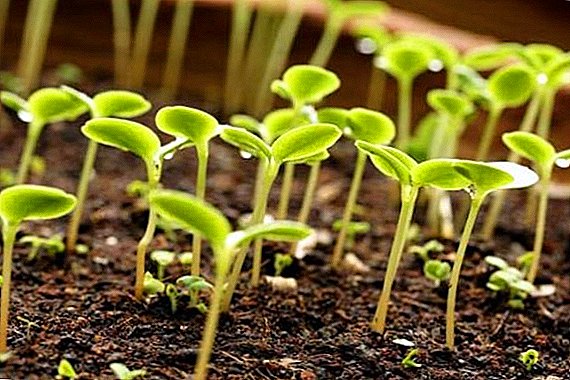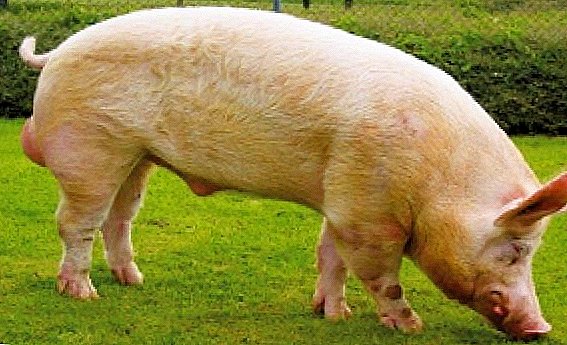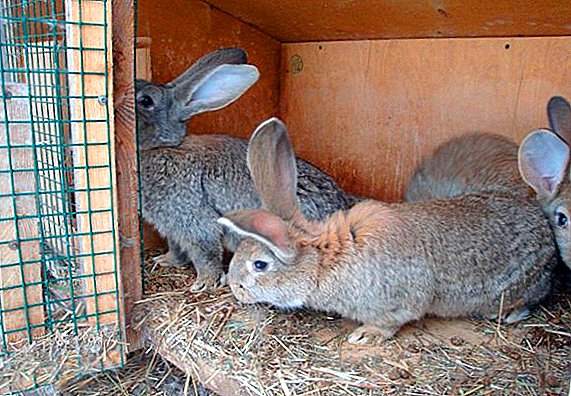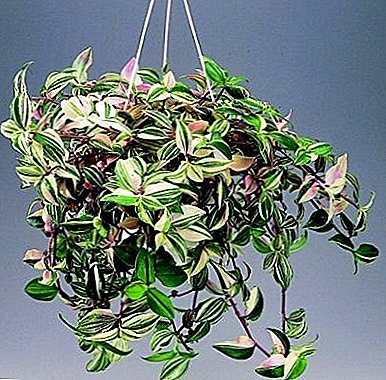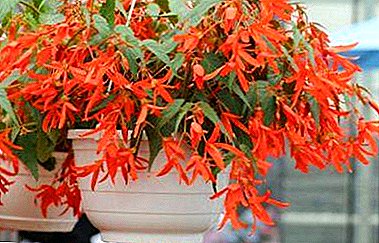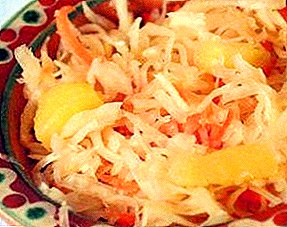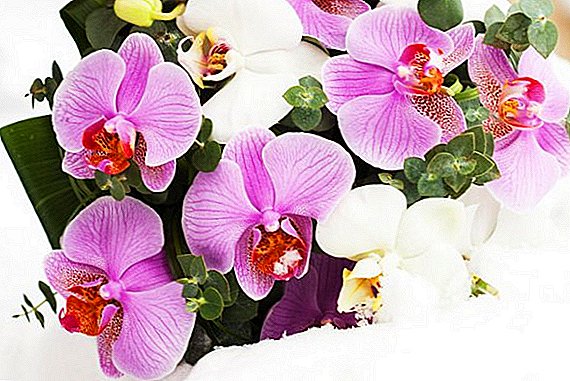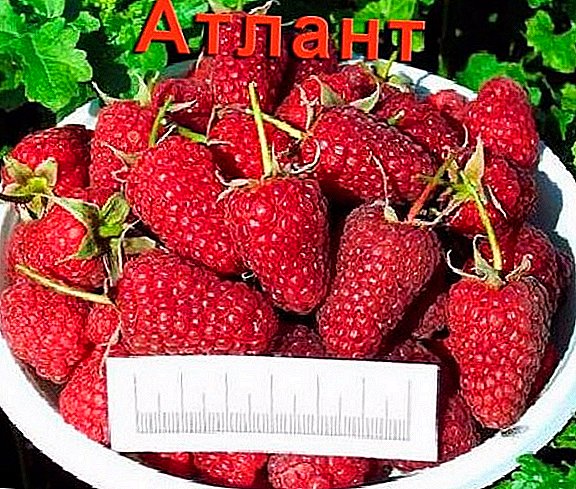 Repair raspberry varieties are quite popular among gardeners today.
Repair raspberry varieties are quite popular among gardeners today.
Raspberry "Atlant" deserves special recognition due to its high resistance to diseases, and in this article you will find a description of the variety, photos and rules of care.
Biological features of the variety
To get a closer look at this raspberry variety, for a start, let's consider its biological features and appearance.
Description of the bush
Bushes variety "Atlant" in height of not more than 1.6 m, rarely reach 2 m, slightly sprawling.
Prone to the formation of new shoots - strong and erect, so this variety does not need mandatory garter. The stems are covered with unsharp soft spikes (mainly in the lower part) and a waxy coating.
Check out also other popular varieties of raspberry repair.
The leaves of the plant are wrinkled, large, dark green color. This variety is remontant.
Did you know? Remontant (French. Remontant - again blooming) - is the ability to fruiting during the whole vegetative period.
Description of berries
The name of the variety speaks for itself - the berries are very large, weighing from 5 to 8 g. Painted in dark red color, have a glossy shine. The form is clearly delineated, elongated, conical. The flesh is sweet and sour, aromatic and juicy. Ripe berries can remain on the shrub for a long time, without being subjected to decay. Separated from the stalk easily, without spilling.
The flesh is sweet and sour, aromatic and juicy. Ripe berries can remain on the shrub for a long time, without being subjected to decay. Separated from the stalk easily, without spilling.
Yield
The variety has a high yield - about 2-2.5 kg of berries are harvested from the bush. Fruits about 50% escape. The first time the berries ripen in mid-summer. This can only occur on shoots older than 2 years. The second harvest appears by mid-August, fruiting lasts about a month, berries appear already on the shoots of this season.
The second harvest appears by mid-August, fruiting lasts about a month, berries appear already on the shoots of this season.
Disease and pest resistance
Raspberry "Atlant" is highly resistant to pests, viral and fungal diseases.
Frost resistance
Frost resistance is high. For this variety, it is advisable to cut off the shoots at the root after the completion of fruiting, this greatly increases the chances of the plant to successfully tolerate winter frosts.
Using
Berries varieties "Atlant" used both fresh and for blanks, including for drying and freezing. Fruits tolerate transportation.
Fruits tolerate transportation.
Together with raspberries, Nazim can be harvested strawberries, pears, pumpkins, herbs, apricots, butter, blueberries, gooseberries, melons.
How to correctly choose seedlings when buying
When choosing a seedling, it is important to determine the place of purchase. It is better if it will be specialized points, nurseries. So the risk to buy a plant unsuitable for further cultivation is much lower. In addition, "with hands" there is a danger of not getting the sort that we would like.
Before buying carefully inspect the seedling. At its base should be at least 3 buds. They give new shoots in the next season. Pay attention to the condition of the roots: they should not be lethargic and dry.
It is useful to remember the rule: the smaller the sapling, the more viable it is.
Important! Do not buy seedlings with roots wrapped in polyethylene. From over-tightening, rotting process can be started.
Planting raspberry repair
To increase the survival rate of seedlings and in the future to obtain a good harvest, you must follow the rules of planting.
Optimal timing
Let's see when it is better to plant raspberries. First of all, the choice of terms depends on the climatic zone. The southern regions are characterized by a rather warm autumn; therefore, an autumn landing is preferable (from late September to mid-October). Before the frosts, the newly planted bushes will start new roots, and in the spring they will grow into active growth.
When planting in the spring, which is arid and hot in the south, seedlings, not having time to take root, release buds. In this case, the probability of death of the plant. The northern spring is more protracted and wet, so seedlings take root better. But it is better to refuse autumn planting in such regions, because frosts occur quite early.
For average climatic zones, both landing options are acceptable. But, by experience, the best results are obtained by landing in the fall. This is especially true for such cold-resistant varieties as "Atlas".
Choosing a place
Responsible should approach the choice of location, because raspberries - a perennial plant and will grow in one place for 10-12 years. For it should choose a well-lit areas, protected from the wind.
It is necessary to avoid damp places with stagnant moisture. It is good if there is a small bias on the plot - this will provide the plants with the necessary drainage. It is not recommended to plant raspberries in areas where cucumbers, eggplants, potatoes, tomatoes, and peppers previously grew.
Site preparation
Soil preparation should begin about a month before planting. To begin with, the soil is dug up to a depth of at least 30 cm. Next, organic fertilizers are applied: manure, humus or compost. Mineral fertilizers, for example, potash or superphosphate, will not be superfluous.
Seedlings preparation
The first step is to remove all dried, non-viable roots. For the prevention of root decay, seedlings are treated with fungicides. Before planting for 1-2 hours, they are also soaked in a solution of the roots (Kornevin, Heteroauxin, humates). Stems should be cut and leave the ground part of about 30 cm.
Process and scheme
Now consider directly how to plant raspberry remontantnuyu.
There are four landing patterns:
- Single row - bushes are planted with beds at a distance of 70-90 cm from each other. Between the beds there should be a space from 1.5 to 2 m.
- Square-bush - seedlings are placed in a square with a distance of 1-1.5 m.
- Curtain - most suitable for suburban areas. Plants are planted in groups of 2-3 seedlings at a distance of about 65 cm.
- Triangular - land on a triangle, the sides of which are 40-50 cm.


The subtleties of seasonal care
In addition to proper planting, proper care of the repair raspberry is also important. The basic techniques are indicated below.
You should learn how to properly care for raspberries, and multiply this plant.
Watering, weeding, mulching
Renovated raspberry variety "Atlant" needs abundant wateringespecially during the fruiting period. Usually the land is moistened once a week, but during periods of drought you will have to do it more often. 
Important! The main rule is to keep the ground always a little wet.
But to prevent the stagnation of water is not worth it.The best way to watering - drip. Since raspberries have a surface root system, it does not need loosening of the earth. Weed prevention is done by mulching.
Since raspberries have a surface root system, it does not need loosening of the earth. Weed prevention is done by mulching.
Fertilization
If the preparation of the soil was carried out according to all recommendations and with the application of fertilizers, raspberries will not need additional feeding for two years. Next, you need to feed the plants annually. Raspberry reacts well to organics. Manure or humus contribute 2-3 times per season from the beginning of the growing season. Also, do not forget about fertilizers containing potassium. With its shortage, raspberry leaves become smaller, turn brown around the edges.
Raspberry reacts well to organics. Manure or humus contribute 2-3 times per season from the beginning of the growing season. Also, do not forget about fertilizers containing potassium. With its shortage, raspberry leaves become smaller, turn brown around the edges.
Preventive treatment
One of the main advantages of the variety "Atlant" is its high resistance to diseases and pests. But still, do not neglect preventive measures. For the prevention of purple spot in early spring, the bushes are sprayed with "Rubiganom" (4 ml of the product are in a bucket of water).
Ammonium sulfate is used against fungal infections (4 g of substance per 1 l of water). To protect against stem flies, the plants are sprayed with "Akklektik" (15 ml dissolved in 10 liters of water). An effective drug for prophylactic purposes is Bordeaux liquid. At the stage of blooming kidneys using a 3% solution.
Read also about diseases of raspberries, their treatment and prevention.
When the buds are treated with a 1% solution. The third treatment is carried out after harvest.
Garter to the support
The grade "Atlas" does not need an obligatory garter in view of powerful stems. However, gardeners nevertheless resort to a garter to supports to relieve gravity and in order that the plant directed all its forces to the development of fruits.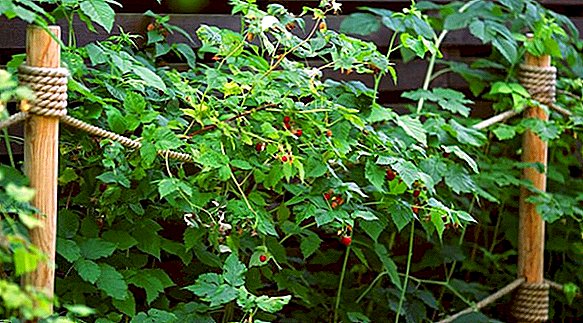
Did you know? Raspberry berries contain vitamins A, B, C, essential oils, organic acids.
Pruning
In case shoots were not cut to the root for wintering, by the spring dry areas, frostbite and cracks may appear on them. Then they carry out sanitary pruning of the raspberry - the damaged shoots are cut off along the first bud. 
For a richer harvest, it is recommended to ignore the first fruiting, and wait for the second, more productive. To do this, after each season shoots are cut off completely. Thus, the cycle of the repair raspberry becomes one-year, unlike the two-year-old in ordinary varieties. As new shoots grow, the bush is thinned out, all weak and diseased shoots are removed.
Preparing for the winter
After completion of fruiting, the shoots of remontant raspberries are cut almost to the root, to ground level. This technique prevents the effects of frost on the bush and protects against pests.. But in this case, the crop plant will bring only once per season - at the end of summer.
This technique prevents the effects of frost on the bush and protects against pests.. But in this case, the crop plant will bring only once per season - at the end of summer.
Raspberry "Atlant" has earned deep recognition and good feedback from gardeners primarily due to its taste and appearance, as well as high resistance to frost and various diseases.


